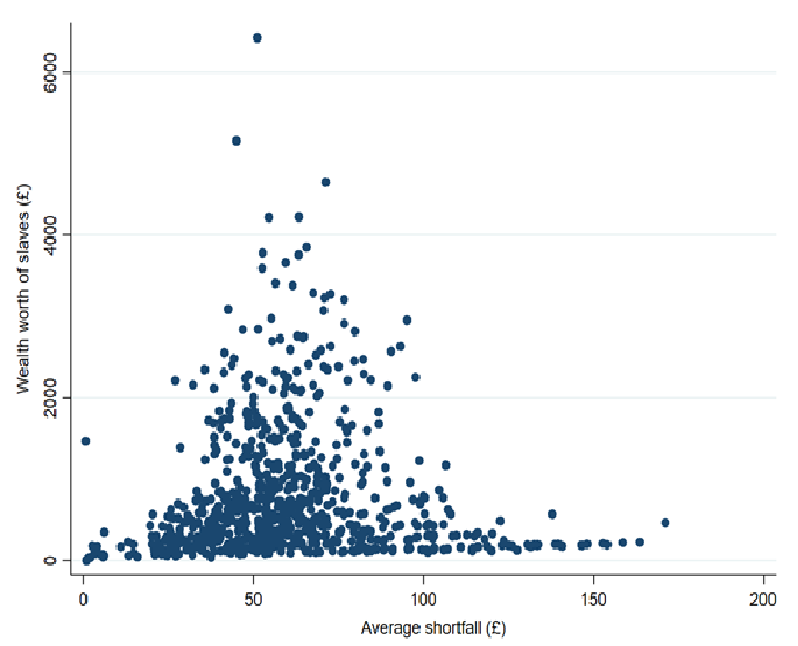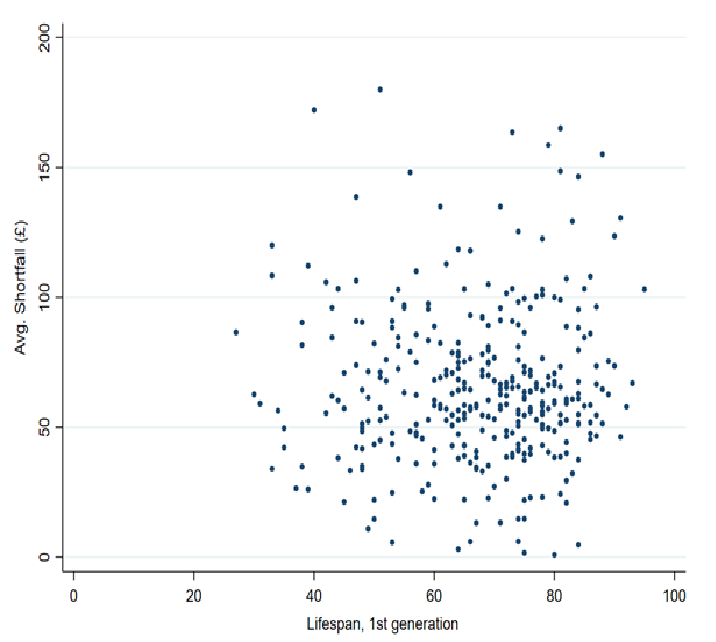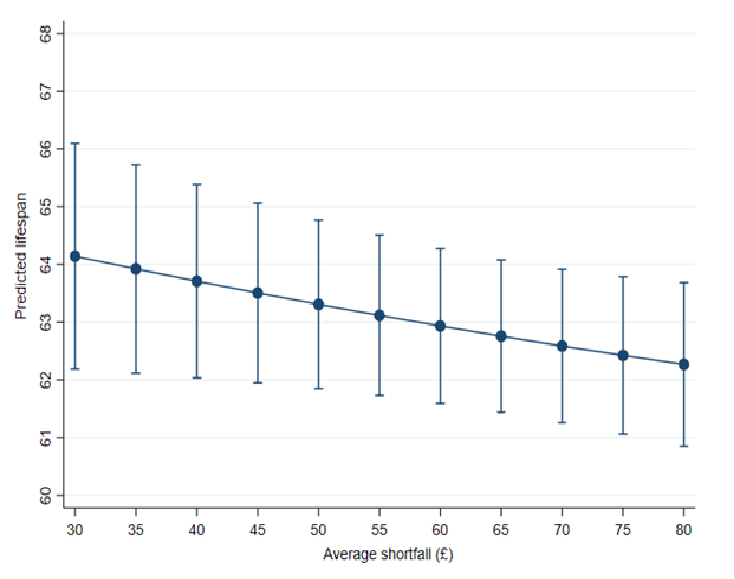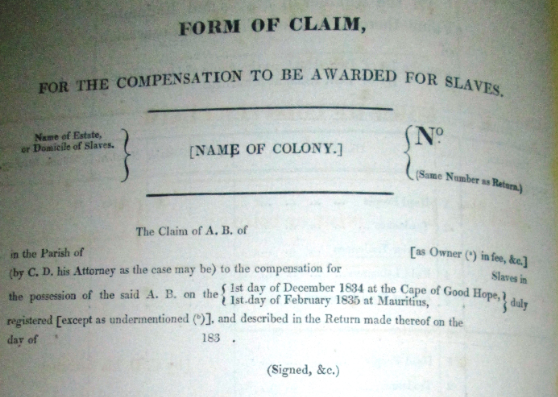Health and wealth are positively correlated across a range of dimensions, but the causal mechanisms remain unclear. This is because health and wealth are inextricably bound up with each other, making it challenging to disentangle cause and effect. Consequently, the question of how later-life outcomes respond to the gain or loss of wealth and how persistent these effects are over time remains open.
Experimentation is difficult since it is not possible to randomize people’s wealth on a large enough scale to test the relationship between wealth and health. Traditional quasi-experimental designs using lottery winnings, stock/housing price fluctuations, and policy changes do not deal with shocks in the form of wealth losses (González et al. 2017), nor the relationship between wealth shocks and health in historical settings (Bleakley and Ferrie 2016; Ager et al. 2021).
Martins, Cilliers, and Fourie (2022) attempt to overcome these challenges by turning to the 1834 emancipation of slaves in the Cape Colony. Slaveholders received cash compensations averaging 40% to 50% of the value of their slaves (slave-wealth, henceforth) as they were seen as legally acquired property at that time. The article identifies health-related outcomes of this shortfall by linking data from three different datasets containing compensation claims, tax returns, and genealogical records, respectively.
Calculating the shortfalls
The Slave Abolition Act of 1833 freed the slaves but also determined that slaveholders were entitled to half of Britain’s annual budget in 1835 — 20 million pounds — as compensation. The money was distributed among the colonies in proportion to the value of the enslaved populations. To ascertain this value, appraisers used market prices determined through auctions using records of public and private sales. In the Cape Colony, more than 38,000 slaves were valued totalling £2,800,000 (Dooling 2008). Compensation claims for the Cape were retrieved from Ekama et al. (2020) and can also be found on the Legacies of British Slavery project website.
Britain made a provision of £1,247,000 to be paid to Cape slaveholders. Compensation was awarded based on sex and occupation of the slaves. Consequently, slave-holders with different slave-wealth would be eligible for the same compensation if their slaves were classified as having the same sex and occupation. This generates a shortfall because the prices of slaves – and consequently slaveholders’ slave-wealth — were influenced by a range of factors such as age, place of origin, height, and weight, besides, of course, sex and occupation. Figure 1 shows this relationship. For any given wealth worth of slaves, a wide array of shortfalls were produced, especially below the £2000 mark.
Figure 1:Total wealth worth of slaves versus total shortfalls and average shortfalls in pounds

These shortfalls are then linked to a genealogical database containing records of all settler families in the Cape Colony. Genealogical records allow for intergenerational linkages, and as such, slaveholders were linked to their children and grandchildren, referred to here as the 1st, 2nd, and 3rd generations. We use lifespan as a proxy for health outcomes. Figure 2 displays the relationship between shortfalls and lifespan. No pre-existing trend can be clearly observed, suggesting that any potential effects of shortfalls on lifespan are likely small and can only be picked up when considering a wider range of controls. These were added by linking the compensation claims to tax censuses produced by the Cape colonial authorities. Censuses contain information about residents’ livestock, agricultural output, related capital, and taxation.
Figure 2: Lifespan in years per year of birth

Estimating the wealth-health relationship
The study estimates the correlation between lifespans and shortfalls across three generations. The results show that larger shortfalls were associated with shorter lifespans among slaveholders from the first generation. More precisely, the shortfalls had an average impact of roughly 0.2 years of life if the slaveholder was subjected to a shortfall equivalent to the mean (£65). This relationship is described in Figure 3. It is worth noting that the second and third generations’ health outcomes were mostly unaffected by shortfalls.
Figure 3: Marginal effects of the average shortfall on lifespan

But how exactly does a shortfall influence the health outcomes of former slaveholders? Here it is important to think about how slaves were exploited: as labor and capital inputs in the production process. To understand how the wealth shock affected different slaveholders, we divided the slaveholders according to four categories of agricultural specialization: producers of grain, producers of wine, producers of grain and wine, and non-producers (i.e. slaveholders that reported no agricultural output). The results are displayed in Table 1.
Table 1: Marginal and mean shortfall effects on slaveholders’ lifespan by category
| Slaveholder category | Marginal shortfall effect (%) | Mean shortfall effect (%) | Mean shortfall effect (years) |
| Non-producer | -0.009 | -0.573 | -0.384 |
| Grain producer | -0.005 | -0.349 | -0.234 |
| Wine producer | -0.006 | -0.372 | -0.249 |
| Producer of both | -0.013 | -0.837 | -0.560 |
Producers of both crops and non-producers were the categories of slaveholders that were the most sensitive to shortfalls. The producers of both crops were also the wealthiest slaveholders of the Cape. This group is likely to have exploited the enslaved as both labor and capital inputs in the production process. The non-producers exploited slaves primarily as capital investments – e.g. as repositories of wealth. The producers of strictly grain or wine were mostly smallholders who probably relied on slave labor – alongside family labor and indigenous labor – to keep their farms productive.
This gradient allows the study to conclude that, firstly, the greater loss of slave-wealth shortened the lifespans of the generation of the first generations slaveholders; secondly, capital withdrawal may have been the most significant mechanism behind these effects and, lastly, these effects are small and mostly confined to older cohorts of slaveholders something that is broadly in agreement with the literature suggesting that the effects of wealth shocks on later-life outcomes are marginal, despite their statistical significance. This is particularly interesting given the nature of the shock we are studying: we are not looking at a wealth gain, but rather at the loss of an asset that was the most important source of wealth for our population of interest. Ultimately, our study suggests that negative wealth shocks have detrimental but limited effects on the health of the affected population even if these shocks are relatively large.
References
Ager, P., Boustan, L. and Eriksson, K., 2021. The intergenerational effects of a large wealth shock: white southerners after the Civil War. American Economic Review, 111(11), pp.3767-94.
Bleakley, H. and Ferrie, J., 2016. Shocking behavior: Random wealth in antebellum Georgia and human capital across generations. The Quarterly Journal of Economics, 131(3), pp.1455-1495.
Dooling, W., 2008. Slavery, emancipation and colonial rule in South Africa (Vol. 87). Ohio University Press.
Ekama, K., Fourie, J., Heese, H. and Martin, L.C., 2021. When cape slavery ended: introducing a new slave emancipation dataset. Explorations in Economic History, 81, p.101390.
González, F., Marshall, G. and Naidu, S., 2017. Start-up nation? Slave wealth and entrepreneurship in Civil War Maryland. The Journal of Economic History, 77(2), pp.373-405.
Featured image: Captured by the authors in the Cape Town archives, it shows an actual form that was attached to physical claims for compensation.
